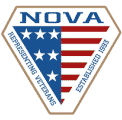Establishing a Service Connection for Veterans: Understanding the Three Critical Elements
For veterans seeking VA disability compensation, establishing a service connection for their disabilities is pivotal. However, navigating the complexities of the VA claims process can be daunting, especially for those unfamiliar with the necessary components that establish this connection. This blog aims to clarify the three essential elements required to prove a service connection for VA disability claims, providing veterans with critical insights to bolster their claims.
Watch the episode!
Element 1: Confirming a Current Disability
The cornerstone of any VA disability claim is the existence of a current disability. VA guidelines stipulate that veterans must present evidence of a current medical condition that affects them. This involves providing medical records or a diagnosis that substantiates the condition. For instance, if a veteran seeks compensation for sleep apnea, they should procure a medical record confirming the diagnosis. Even in the absence of direct medical records, veterans can supply detailed personal statements describing their symptoms. For physical or mental health conditions, such as PTSD or depression, veterans should vividly outline how these issues manifest in daily life.
Element 2: Proving the In-Service Event, Injury, or Disease
The second element necessitates evidence of an in-service event, injury, or disease that is linked to the current disability. This could encompass a wide array of incidents ranging from injuries sustained in training to exposure to hazardous substances. The scope is broad—anything occurring between entering and leaving active duty service might qualify, provided it wasn't due to misconduct. Veterans could utilize service records, buddy statements, or even historical research on unit activities to substantiate their claims. Special VA presumptions can sometimes ease this burden of proof. For example, veterans who served in designated areas might be presumed to have been exposed to specific toxins, simplifying the evidentiary process.
Need help with your claim? Reach out to our VA-accredited team for a free consultation: https://calendly.com/vetlawoffice
Element 3: Establishing a Nexus: The Medical Link
The final and often most challenging component is demonstrating a medical nexus. This involves obtaining a medical professional's opinion that it's as likely as not that the current disability is linked to the in-service event. The VA might facilitate this by providing a Compensation and Pension examination where a VA doctor evaluates the connection. However, if the initial VA examination does not support the claim, veterans can seek opinions from private medical professionals. A well-substantiated nexus is critical to a successful VA claim. Veterans facing challenges in meeting these criteria should consider reaching out to a VA-accredited attorney or a representative for guidance. Experienced professionals can assist in navigating complex documentation requirements, ensuring veterans present compelling evidence to support their claims.
Veterans seeking to establish a service connection for their disabilities must focus on demonstrating the existence of a current disability, an in-service event or injury, and a medical nexus. By meticulously gathering and presenting relevant evidence for each of these elements, veterans can significantly improve the likelihood of a favorable outcome in their VA disability claims. For those struggling with the process, professional legal support can provide the clarity and expertise needed to navigate the complexities of VA claims successfully - reach out to the team: https://calendly.com/vetlawoffice












